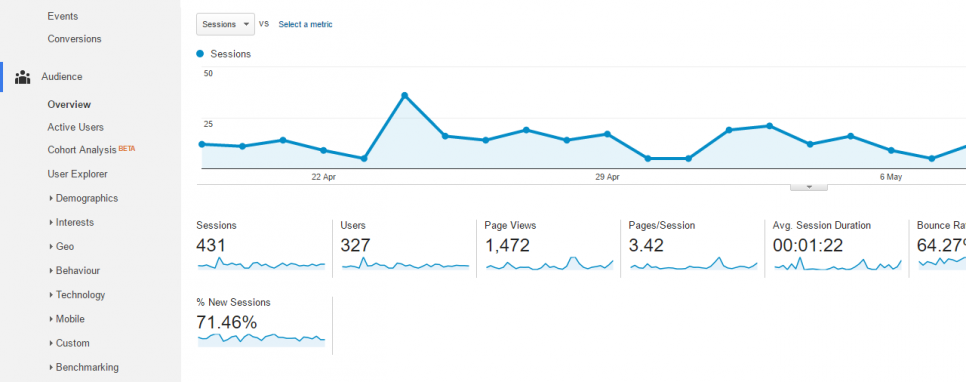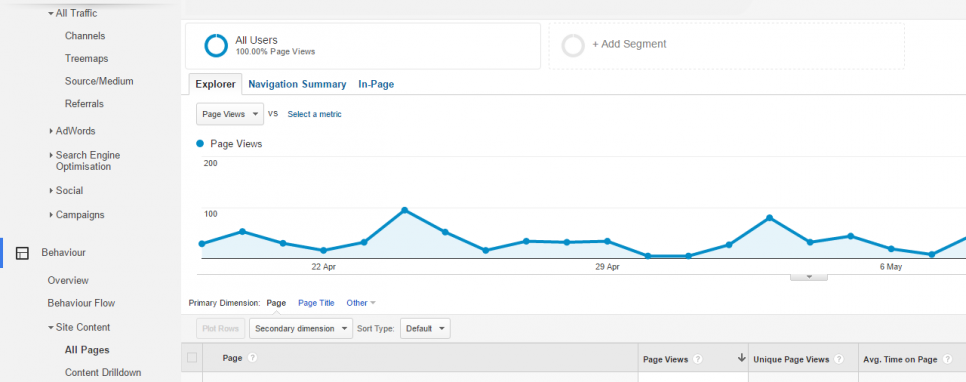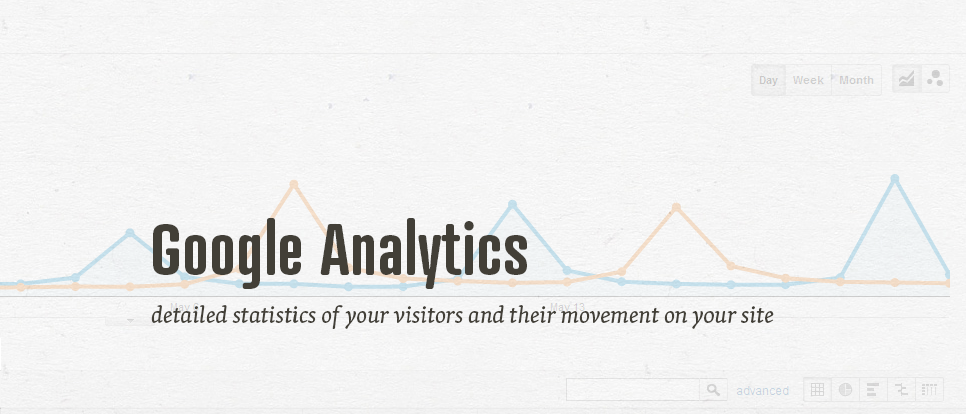The web traffic measuring service Google Analytics offers dozens of data that can be a bit overwhelming all at once. Of course there are various professional overviews and tutorials from Google itself or other agencies that deal with explaining specific Analytics functions, but before you'd want to give all of them a try, you should know some basics first.
Audience Overview
What brought the individual visitors on your website? For how long did they stay and how soon did they leave again? You can discover this and lots of other information in the statistics of your visitors that you can open by clicking on Audience and then Overview.
After you select a specific time interval (Analytics automatically measures the past month), you can see how many visitors did your website have, how many views (the numbers are different because each visitor can view your website several times), page views, average time spent on site, or bounce rate, which means how many people left your site after visiting only one page.
In secondary data, you can see from what countries each of your users came, what browser and operating system do they use (and in what language), or what is their screen resolution, which can be useful for optimizing the design of your website.
These basic data can easily show you what pages or articles of your website are the most popular and which are the least. If for example the average time spent on a page with a longer text is several minutes, people are probably really reading it. However it it's only a few seconds, no one seems to be interested.

Real time visitors
As the name itself suggests, the Real Time function helps you to immediately see the current movement on your website. Thanks to this function you can see how many people are right now on your website (or a specific page), how is your traffic influenced by instant promotion (for example through paid promotional campaign) or from where do individual visitors come to you (however keep in mind that these numbers are aggregated, which basically means that they don't have to be 100% accurate).
Where did everyone come from?
There are also lots of interesting data in Google Analytics' section Acquisition, but we will focus here only on those most interesting. Because when you select All Traffic and Referrals in Acquisition, you can see the individual sources your visitors came to your websites from.
Thanks to this information, you can find out not only how effective it is to share links to your website on various social networks, but also if anybody posted a link to your web for example on a forum or their own social profile. In another words, thanks to this metric you can easily see how the awareness of your project grows.

Visitors behaviour
The last function that you should be avare of is Behaviour, which measures the visitor movement on your website and what pages do they like the most and from what they just better run away (or they just end their journey on your website).
Whereas in the overview of this function you can follow the general traffic of your individual pages, you can inspect more specific analysis in the next options. Behaviour Flow will show you the most common patterns of in what order your visitors go to individual pages. Site Content shows traffic, the average time viewing, or bounce rate.
In the subcategories Landing Pages and Exit Pages, you can find out which page of your website is usually the first one your visitors land on, and which is usually the last one. So if you for example notice that most of your visitors runs away after entering the pricing page, you probably know where the problem is.

In the Site Speed subcategory, you can see what pages take too long to load (for example because of a large amount of images or their size). In Site Search you can then see how many visitors came to you through Internet search engines and what keywords were they searching.
Of course Google Analytics offer lots of other interesting data, but if you know from the beginning at least these ones, it surely will be a first step for understanding and using the Analytics data for expanding your website's reach.




